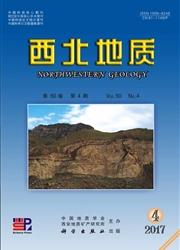

 中文摘要:
中文摘要:
迟了的 Sinian (Ediacaran ) Gaojiashan 生物区系是实质的 pyritized 统治的 soft-bodiedfossil-Lagerstatte,三在尺寸上的保存管状的 andconotubular 石块。软织物的 pyritiza-tion 在石块记录是极其少见的,在特别前寒武纪,因此,它在 Gaojiashan 生物区系为学习 ofpyritization 有很重要、唯一的意义。早 pyritization 在石块保藏起了一个枢轴的作用,二个主要因素保证了石块的成功的 pyritization,也就是快速的埋葬并且每矿化作用。前者被世俗的暴风雨免职控制,并且后者被可得到的铁的足够的供应从沉积完成。Conotubusdemonstrate 的 SEM 数据试管的保藏的二种类型(定义为类型 A 和类型 B,分别地) 。Intype A, pyritization 更早相对发生了并且完全保存了试管墙和体腔,但是不详细说明了结构。当时在类型 B, pyritization 以后有点发生了并且保存了综合试管墙,但是部分体腔。黄铁矿 framboids 的尺寸频率分发建议 pyritization 与全部不同的氧内容发生在二不同环境。
 英文摘要:
英文摘要:
The Late Sinian (Ediacaran) Gaojiashan Biota was a soft-bodied fossiI-Lagerstatte dominated by substantial pyritized, three-dimensionally preserved tubular and conotubular fossils. Soft-tissue pyritization is extremely scarce in the fossil records, especially in the Precambrian, therefore it has very important and unique significance for the study of pyritization in the Gaojiashan Biota. Early pyritization played a pivotal role in the fossil preservation and two main factors ensured the successful pyritization of the fossils, namely rapid burial and permineralization. The former was controlled by secular storm deposition, and the latter was achieved by sufficient supply of available iron from sediments. SEM data of Conotubus demonstrate two types of preservation of the tubes (defined as type A and type B, respectively). In type A, pyritization took place relatively earlier and completely preserved both tube wall and coelom, but no detailed structure. While in type B, pyriUzation took place somewhat later and preserved the Integrated tube wall, but partially the coelom. The size frequency distribution of the pyrite framboids suggests that pyritization took place in two different environments with entire different oxygen content.
 同期刊论文项目
同期刊论文项目
 同项目期刊论文
同项目期刊论文
 期刊信息
期刊信息
